What It's Really Like to Drive a Car in Japan: An Explainer
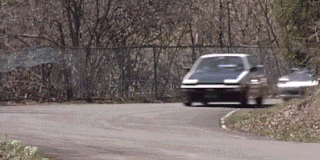
You're living the dream. You're in Japan, you just bought a Nissan Skyline R33 GT-R, everybody back home is jealous of you and now, you can enjoy those infamous Japanese "touge" roads, Eurobeat blasting through the stereo, thanks to that cassette-tape adaptor you just bought for your iPod. Ah Japan, the land of awesome cars, traffic jams, expensive tolls, terrible drivers and insanely low speed limits.
Wait…. What? This is everything you need to know about driving in Japan.
Filling Up
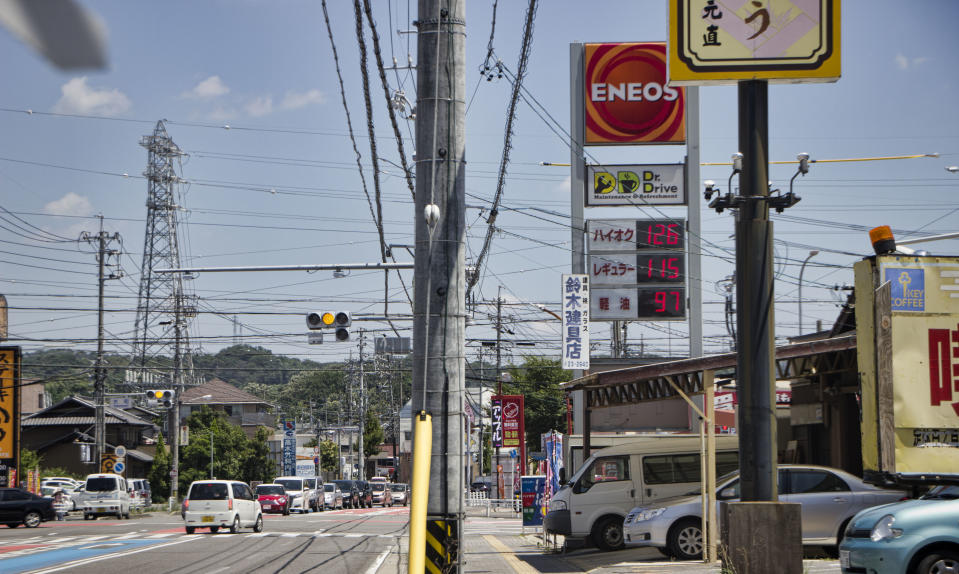
Shocker: It's basically the same as it is in America. You have the choice of three grades of fuel Haïoku, Regula and Keiyu (Premium, Regular, or Diesel) and you pay with cash or a credit card. Pretty basic. What is different is how the attendants work.
As soon as you pull into the station, you'll be loudly greeted by five or six people, all dressed in uniforms, running between cars. Most gas stations you'll find in Japan come with service but unlike New Jersey, there are no laws against pumping your own gas. While self-service stations are not rare in Japan, they are not the norm either. One of the workers will show you where your pump is, going as far as telling you where to stop exactly. Then, that same staffer will greet you one more time and ask what type of gasoline you want.
Gasoline is quite a bit more expensive than in the US or even Canada, so right now, expect a liter of regular to cost around $1.10 and a liter of premium to cost around $1.25, which equals to $4.2/$4.9 per gallon. They will also hand you a very stinky wet towel, to clean up your dashboard (Don't take it or it will make your car interior smell terrible), and then will ask if you have any garbage that you want to get rid of and they will offer you to clean up your windshield and windows. This comes at no extra cost. As you're leaving, they'll cheerfully wave goodbye and frequently will block traffic for you. Talk about service.
Getting out of the city
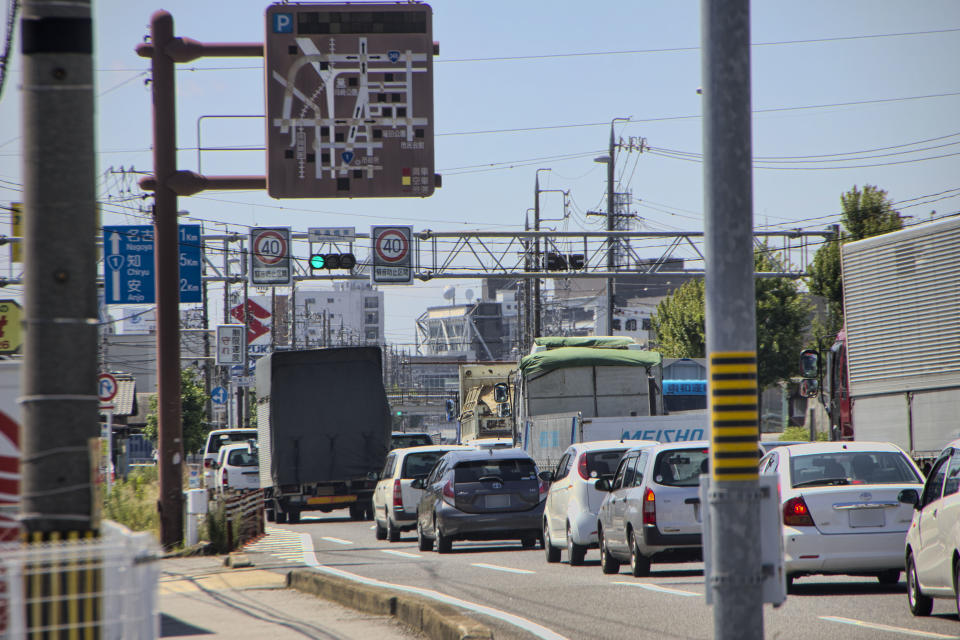
Chances are that you don't live in the middle of rice fields, and a quick look on Google indicates that it will take 1 hour and 10 minutes to reach that cool looking road 25km away. Nah, that can't be possible… It's so close, how can it take so much time?
Think of Japan like LA. Driving there means you're crawling most of the time. Even when traffic is light, getting out of cities can take absolutely forever due to the sheer amount of traffic lights. People also tend to drive very, very slowly, which really doesn't help. In spite of this general slowness, be ready at any time to swerve, avoiding some inept driver who has no idea what they're doing behind the wheel of a car.

And even if talking on cell phones while driving is prohibited, there is another distraction: TV. Many Japanese cars with navigation systems come pre-installed with a TV tuner. They're only supposed to work when the car is stopped, but there are ways to hack them to work while in traffic or on the move.
Japanese driver licenses may be very hard to get, but tests are solely conducted on what look a lot more like a gymkhana course rather than a proper road. Japanese drivers are never taught how to deal with other cars or how to use that right pedal to insert themselves into traffic. This creates lots of problem, with people that are, at best, overly careful, at worst completely panicked, and who simply can't drive with other people around them. Despite the very slow pace on Japanese roads, on average, 8 people die for every billion kilometers driven. That's more than the US (7.1), France (5.8), Germany (4.9) or pretty much any developed country with much higher speed limits.
The great roads
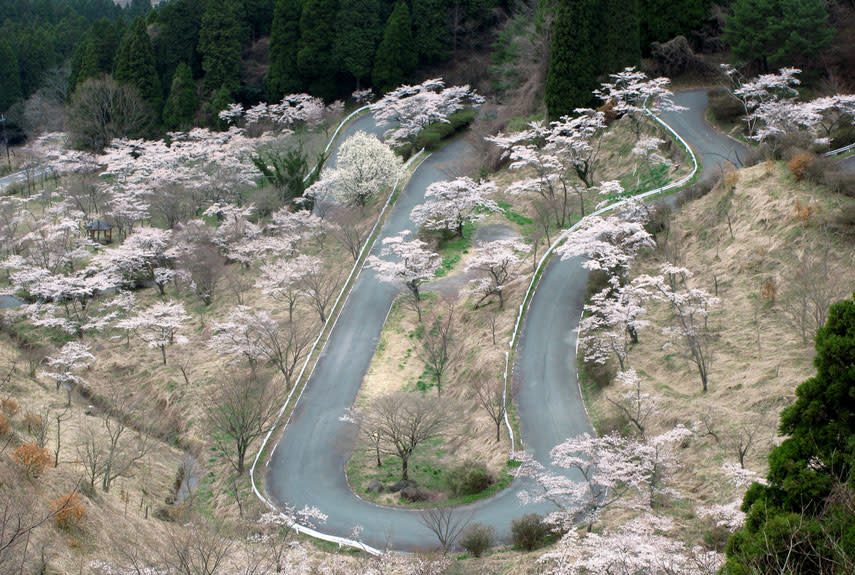
Anyway, you've made it out of the city (alive!) and that awesome road is now yours! This is where driving in Japan gets great. Really great! Mountain roads (Touge), if they have not been made famous by a certain anime, or if they aren't too close to residential areas, are often police and car free. The freedom that people who still like driving get on those roads is not an urban myth. If you know what you're doing and don't spend hours on the same corner, trying to perfect that four wheel drift, you will be able to properly enjoy your car without having the man on your tail. But don't forget that many of those roads are not very well protected if you crash, and the fall can be steep.
Most of the corners are blind. A lot of the corners do have mirrors to help you see around, but those are rarely helpful unless whatever is approaching is huge. Don't rely on them. These roads, hidden deep in the mountains, may just see one or two cars per hour, but a friend with a walkie-talkie is by far the best solution if you plan on pushing your car a little and pretending that you're delivering Tofu as fast as possible.
Keep in mind that what you will be doing is still most likely illegal (speed limits in mountains are often set between 40 and 60kph). Police will never care as long as locals don't start complaining, so don't abuse their laissez-faire. Don't be reckless, make sure no one else is on the road and this can be an absolute paradise for every car enthusiast on the planet.
For some more legal fun with your car, track days at small local racetracks are also fairly cheap. A 20 minute sessions usually costs between $20 and $30, which makes the whole experience affordable.
Highways
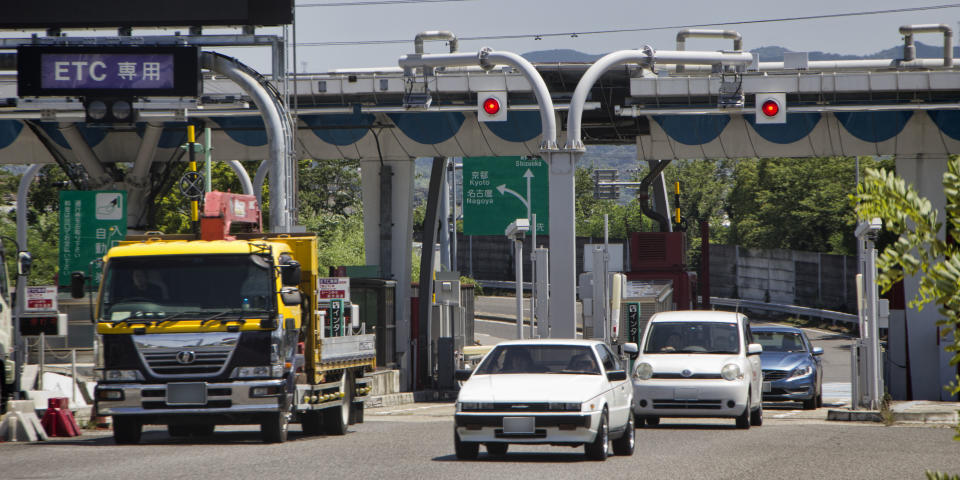
Now, you have a rough estimate of how much your daily life in Japan will cost, but what about longer trips? Like a road trip to spend a couple of days somewhere, 200 or 300km away. This is where your wallet will hurt the most. Any trip that involves taking the freeway is insanely expensive, thanks to tolls.
Free highways are almost non-existent in Japan, which makes any trip egregiously expensive. When highways were first built in the country, the Japanese government promised that once they were paid for, toll booths would disappear and they would be free of use. That never happened. Instead, drivers in Japan are stuck with huge toll bills.
For example, here's how much a trip I usually do costs: I live in Okazaki, near Nagoya and want to drive to Tokyo, 300km (180 miles) away. If I want to avoid toll roads, driving there would take me about seven hours. Yes, you read that correctly: seven hours. A trip on the highway will take just a little more than three hours. It's a no brainer.
Problem is that this 600km round trip will cost me about $140 in tolls. If you add the $70 worth of gas that I'll need, that's $210 for a distance much shorter than a Boston-NYC round trip. Also, even though the highways cost a lot to drive on, the road quality is fairly poor. Since Japan is a highly seismic country, pavement joints move and can sometimes end up being hard to cope with, especially if you drive a sports car.
Cops
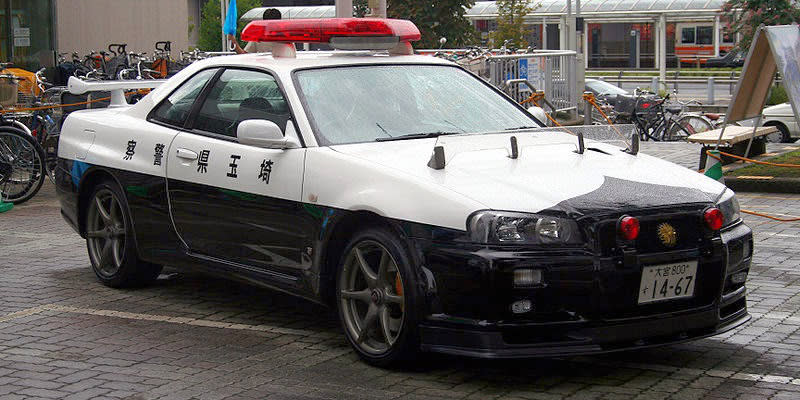
Speed limits are VERY low. Usually 40 kph in cities, 50 or 60 kph outside of cities and 100 kph on the highway. But there is good news: You will be happy to learn that police officers don't really care that much about speed limits as long as you don't act like an idiot.
Driving around 120 or 130kph on the freeway most likely won't get you stopped, same thing goes for back roads where driving 90kph is no problem at all. Cops very rarely install speed traps outside of freeways, and even on then, radar detectors and laser jammers are 100 percent legal. Speed cameras do exist, but in order for you to actually get a ticket, a clear picture including both your license plate and your face behind the wheel of the car are needed. This is the reason why you see so many Japanese cars with their front license plates being installed at weird angles or in unexpected places.
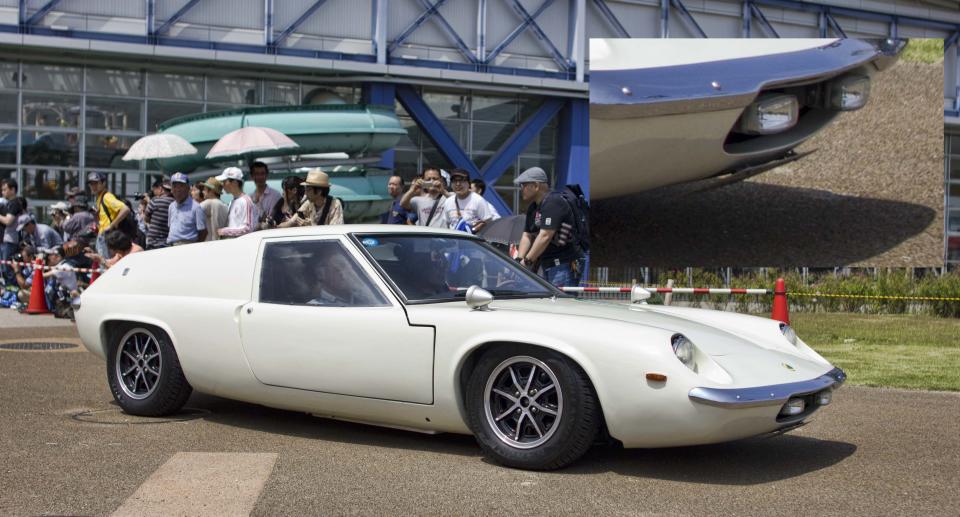
If you think the Lotus Europa above has no front plate, look again, it's there, positioned in a way that makes speed cameras totally powerless. I am also guilty of a front plate trick, mine being installed under my front bumper.
If you ever get stopped for speeding or anything else, don't bother arguing. Cops are extremely professional, both in the way they'll treat you and in the way they'll fine you, following the exact procedure, all the time, every time.
If you don't live in the middle of Tokyo or Osaka, owning or driving a car in Japan is not as awful as it may first appear. Sure it's slow and expensive, but those annoying moments, spent stuck in slow moving traffic, are largely compensated by awesome driving roads everywhere around the country since 75 percent of Japan is made of mountains. And, of course, there is the amazing car culture that refuses to die, in spite of all the soulless cars that Japan produces . If you can, one day, come and live in Japan for a bit, don't give up on owning a car: It's very much worth it and it's often the only way to access the less traveled places in the country. All those moments with your car-the good ones and the bad ones-will make for an unforgettable experience.
[contentlinks align="center" textonly="false" numbered="false" headline="Related%20Story" customtitles="What%20It%20Takes%20to%20Buy%20and%20Own%20a%20Car%20in%20Japan" customimages="" content="article.30270"]
You Might Also Like

 Yahoo Autos
Yahoo Autos 